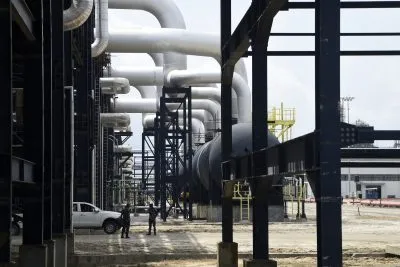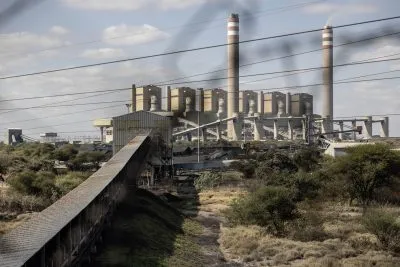Africa’s low agricultural yields and ineffective agribusiness practices have long been regarded as an African problem.
Yet rising global population and the huge amount of untapped agrarian land in Africa mean that the continent’s farming challenges are now viewed as an international problem. The continent not only has the highest levels of food insecurity in the world but it also has the potential to become the new global breadbasket.
Reconciling these two contrasting images will require a revolution in agribusiness but there are already signs of progress. Falling fertility rates have resulted in a reassessment of demographic changes and the United Nations now expects the world’s population to peak at 9bn, rather than the earlier estimate of 12bn, later this century.
However, the UN’s Food and Agriculture Organisation (FAO) still estimates that global agricultural production needs to rise by 60% to cope with rising demand, including a 100% increase in Africa. This puts the continent centre stage in global agriculture.
Speaking at the West Africa Fertiliser and Agri-Business Conference in Accra in July, Eugene Rurangwa, the land and water officer at the FAO’s African regional office, said: “This has to be done without increasing the surface area. So this is really a very serious challenge that we have.”
Estimates vary, but 45–60% of all the uncultivated land in the world that is suitable for growing food crops, roughly 600m hectares, is in Africa. Bringing more land into production could provide part of the solution, although this could threaten delicate ecosystems.
However, the biggest boost to African agriculture should come from increasing yields, which have risen for some crops in some areas in recent years but which are still very low by international standards for many staple crops. Maize production in Europe, for example, averages about 10 tonnes per hectare, in comparison with 1 tonne per hectare in sub-Saharan Africa.
However, many countries are increasing production substantially faster than their populations are growing. Zambia was a net maize importer as recently as 2007 but has increased the amount of land dedicated to maize cultivation by 800,000 hectares since then and is now a net exporter.
Soil quality
Poor soil quality carries part of the blame for low yields. Erosion, rising salt levels, compaction, acidification and chemical pollution are all to blame for the depletion of soil nutrients.
Professor Victor Chude, the national president of the Soil Science Society of Nigeria, said: “A lot of our soils are losing their fertility because a lot of nutrient mining is going on. What it means is the farmers are not using enough fertilisers. Most parts of Africa still use up to 10 kilos of nutrients per hectare as opposed to the 50 kilos per hectare recommended by African heads of state in 2006 to be attained in 2015.”
While 30% of agrarian land is regarded as moderately or highly degraded worldwide, the figure in Africa is a massive 79%. The FAO has drawn up a three-pronged strategy to deal with the problem that has been adopted by many governments: putting soil management into governance structures and policies; investing in soil research; and promoting education in soil management areas.
Many parts of Africa have the potential to produce crops three times a year. With high yields it is vital that the best methods of protecting the soil and water resources are employed.
Cultural attitudes towards agriculture in many parts of the continent are a less discussed problem. Although agriculture employs far more people than any other sector in Africa, there is a still a perception among many urban elites, including those in government, that working in the sector is somehow less worthy than employment in more predominantly urban industries.
At the same time, governments have sought to control the sector through state marketing boards and state fertiliser and seed distribution networks. Yet there is now a general recognition that most activities within agriculture and agribusiness are best handled by the private sector.
The government’s role should be that of market regulator and of supporting the market, including sometimes through subsidising fertiliser and seed prices.
The World Food Prize
The African Development Bank (AfDB) has focused its support for the sector in recent years on encouraging the private sector to supply seeds and fertiliser, often through small agricultural supplies shops. These agro-dealers live much closer to the farmers they supply than the government agents who visit agricultural areas on an intermittent basis and on which many countries have long relied.
Indeed, AfDB President Akinwumi Adesina was awarded the World Food Prize in late June for his organisation’s work on encouraging higher yields and boosting farm incomes.
Dr Adesina said “One of the things that I have worked on was how to accelerate our efforts. You know, you can find Coca Cola or Pepsi anywhere in rural Africa, so why can’t you find seeds or why can’t you find fertilisers? It is because the model that was used to distribute those farm inputs were old models based on government distribution systems, which are very, very inefficient.”
The World Food Prize was founded in 1986 by Nobel Peace Prize winner Norman Borlaug, with the aim of helping “further the discussion on cutting-edge global food security issues and inspire the next generation to end hunger”.
Food security has increased in recent years, but plummets during and following droughts and floods. One of the biggest factors affecting the sector is increasing variability in rainfall patterns that affect the sustainability of food supplies. Droughts not only hit farmers hard but destabilise the whole food processing, distribution and marketing industry.
With the impact of climate change likely to intensify decade on decade, African agriculture must face up to unpredictable rainfall. Greater food storage capacity is part of the answer but the main solution is greater integration of Africa within global agriculture and food supplies.
A poor harvest in one geographic region is usually accompanied by a plentiful one elsewhere. Ensuring that markets work in the best interests of consumers worldwide should reduce the scope for shortages.
Neil Ford
Want to continue reading? Subscribe today.
You've read all your free articles for this month! Subscribe now to enjoy full access to our content.
Digital Monthly
£8.00 / month
Receive full unlimited access to our articles, opinions, podcasts and more.
Digital Yearly
£70.00 / year
Our best value offer - save £26 and gain access to all of our digital content for an entire year!
 Sign in with Google
Sign in with Google 


